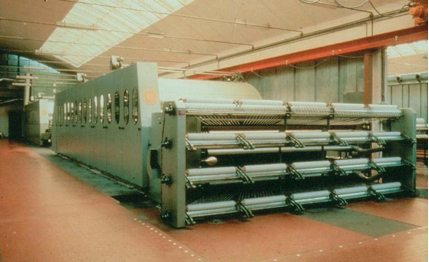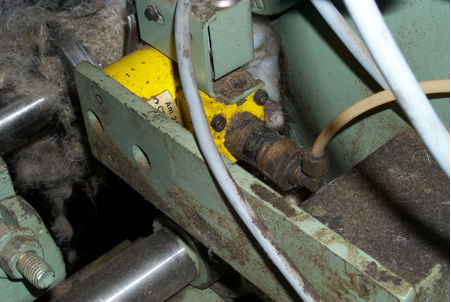pdf Inadvertant disposal of textile gauge (4.01 MB)
Description of the incident
During a routine visit to check on progress with the decommissioning of a carding machine (see picture for a typical example), a company’s senior engineer discovered that an 11.1 GBq americium-241 source that should have been installed on the production line was missing. The carding machine, used in the textile industry, had not been used for approximately six months. The senior engineer reported the discovery to the site’s Engineering manager and was informed that the gauge containing the source had been removed from the machine and placed in a store approximately six months previously. The visiting engineer asked to see the source in the store and immediately noticed that it was the detector not the source that had been placed in the store. Further investigation revealed that the Engineering Manager at the site where the source had been installed had been instructed by the Site Manager to remove the source and place it in storage prior to decommissioning of the production line. The Engineering Manager had not received training in the operation of the gauge or in radiation protection and mistakenly thought that the detector was the part of the gauge that contained the radioactive source. He therefore removed the detector and placed it in the store. The source and its housing remained attached to the machine which was sent for scrap metals recycling.
On making this discovery, the company sought advice from the organisation that had carried out the statutory leakage tests on the source in the past. The company was advised that it was required to inform regulatory authorities of the loss of the source. The company also sought assistance from a Radiation Protection Adviser in order to carry out an investigation into the circumstances of the lost source and to review its radiation protection arrangements for the other two sources that remained on site.
Attempts were made to trace the lost source, but these were unsuccessful, partly due to the time lapse between the removal of the source and discovery of the loss. The source would have been still attached to parts of the machine that was sent to a scrapyard. The scrapyard did have an installed gate monitor for detection of orphan radioactive sources, but on this occasion the source was not detected. This is not unexpected, as the source was installed in a housing that provided a high level of shielding. The relatively low energy gamma emissions would also have been substantially shielded by the other waste in the consignment.
It is likely that this batch of scrap metal was compacted together with other ferrous metal and sent abroad to be melted down for reuse.
The company where the machine was installed was prosecuted by the regulatory authorities and was ordered to pay approximately €50, 000 in fines and costs.


Radiological consequences
If the source did remain in metal that was smelted , there would have been the potential for the foundry workers to be exposed to dust contaminated with americium 241. There is also the potential for exposure to anyone working with the metal/by-products. As the fate of the source is unknown, it is not possible to estimate potential doses.
Lessons to be learned
There were a number of factors which contributed to the loss of the source and the delay in its discovery.
- The Radiation Protection Supervisor previously appointed by the company retired a few months before the source was removed and he was not replaced. Therefore, there was no adequate supervision of the sources and no source accountancy records were being kept.
- An untrained member of staff was asked to carry out a task that he was not qualified to do and mistakenly removed the wrong part of the gauge. The manager responsible for the decommissioning project also had no awareness of the requirements for working with radioactive sources.
- The loss of the source was only discovered by chance some months later and the significant delay was a contributing factor in failing to trace the final destination of the source.
- The company had not fulfilled its obligation to consult a Radiation Protection Adviser and had also not carried out a risk assessment in accordance with the requirements of the national regulations.
Companies must ensure that there are arrangements (organisational and individual) to provide effective supervision of radioactive sources. There are a number of incidents on OTHEA in which the absence or loss of a supervisor - even temporarily - has been a contrbuting factor. Organisations should ensure that an appropriate level of supervision is maintained at all times.
Source housings should be clearly marked to help identify the precise location of the source, especially where it forms part of a larger machine.
Regular checks on the location of radioactive sources must be made, and the results recorded.
Suitable and sufficient risk assessments must be carried out before work commences and employees carrying out that work must have received the information, instruction and training necessary to ensure that they are competent to carry out their duties.



